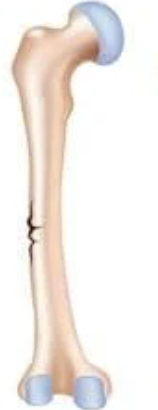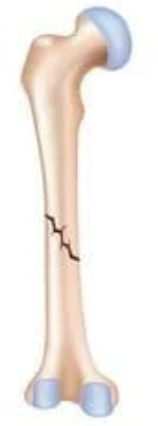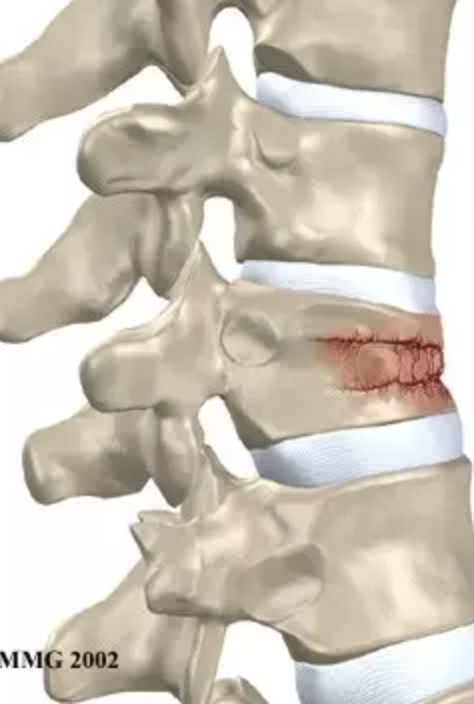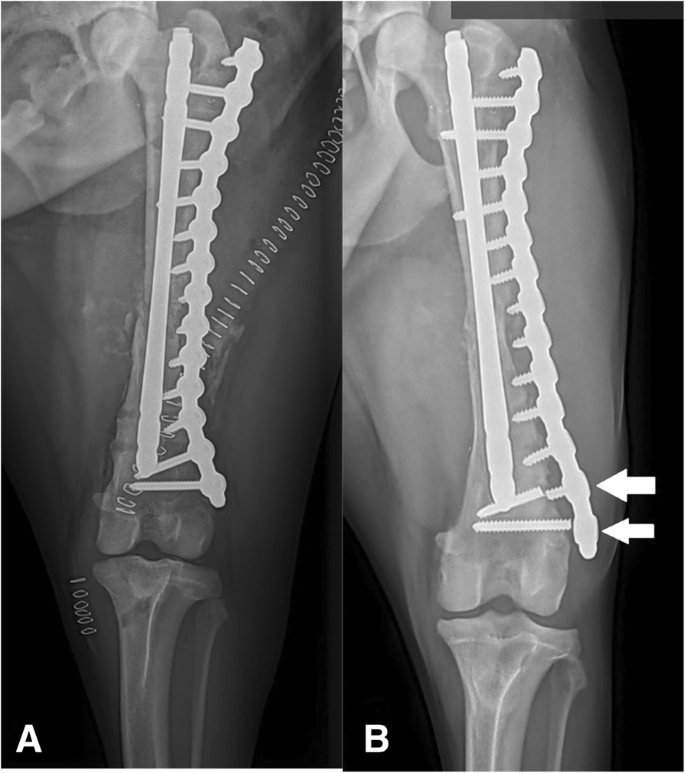Unit 1 Diagram of long bones/ compact vs spongy bone/ Type of bone fractures/ fracture repair
1/42
There's no tags or description
Looks like no tags are added yet.
Name | Mastery | Learn | Test | Matching | Spaced |
|---|
No study sessions yet.
43 Terms
spongy (calcaneous) bone
cancelli=
light weight stores red bone marrow and test blood vessels reach bone
cross bars
Compact/cortical bone
cort=
gives bone strength and releases CA to blood when needed
cover
Periosteum
“around the bone” lets muscle attach to bone and gives blood a path to nourish bone
(located: wraps around the diaphysis)
Diaphysis
dia=
physis=
the bones shaft, gibes strength and strength
through, grow
Epiphysis
epi=
physis=
“end of long bone” filled with red marrow, spongy bone where blood made
upon, grow
Epiphyseal plate
grow plate, allow bone to lengthen as we age
Medullary cavity
medul=
“hollow part of the bone shaft contains yellow
middle
(located: inside the diaphysis)
Yellow Bone Marrow
make cartilage, fat and bone, stores fat for energy
(located: inside medullary cavity)
Red Bone Marrow
“in spongy bone” makes blood RBCs, platelets, WBCs
Articular/hyaline cartilage
articul=
hyalin=
“on the ends of the bones” super smooth, reduces friction
connecting, glassy
What is another name for compact bone?
cortical bone
What is another name for spongy bone?
cancellous bone
Where is compact bone/ cortical bone found?
in the diaphysis
Where is cancellous/spongy bone found?
in the epiphysis
What is compact bone/ cortical bone do
provides strength
What is spongy/cancellous bone do
gives bone lightweight quality
gives bone flexibility
red marrow is found
Osteocyte
mature bone cell (send signals)
osteon
also called Haversion System, looks like a ring and contains the other structures (gives bone strength)
Harversian Canal
inside each osteon, a hollow opening for nerves and blood vessels
Lacunae
a dent that each osteocyte lays in (spot for bone to sit in)
Canaliculi
tiny channels that link lacunae and let nutrients flow in and waste flow out
Trabeculae
tough connective tissue that forms beams/ timbers that are like crossbars and filled with red bone marrow
Red Bone Marrow
produces blood cells (all kinds) and fills in gaps in the trabeculae
comminuted fracture
(impact)
a bone that is broken in at least 2 places, caused by severe trauma
-will need surgery to repair bone and recovery can be a year+

transverse fracture
(bending)
occur when your bone broken perpendicular to its length
-usually affect longer bones from trauma accidents

spiral (complete) fracture
(twisting)
happen when one of your bones is broken w/ a twisting motion
-create a fracture that wraps around your bone like a corkscrew

Greenstick fracture
a partial break in a bone that occurs when it bends and cracks on one side

Oblique fracture
a bone break that occurs at an angle, often in long bones like the femur, tibia, or fibula.

Compression fracture
a type of broken bone that can cause your vertebrae to collapse, making them shorter.

Simple (closed fracture)
a broken bone where the skin is not pierced.

Compound (open) fracture
a fracture in which there is an open wound or break in the skin near the site of the broken bone.

Osteoblast
immature bone cell that lays down new bone during skeletal development and remodeling
“new born baby) blast: sprouts or immature cell
Osteoclasts
makes and secretes digestive enzymes that break up and dissolve bone tissue
Clast: breaker
Osteocytes
mature bone cell that is part of fully formed bone that is embedded within to give back strength
bone remodeling
breaking down old bone to replace it with new bone
Process of bone modeling
Hematoma formation - fibrocartilage callus formation - bony callus formation- bone remodeling
#1 hematoma formation
a collection of blood that pools outside of a blood vessel, usually caused by an injury or surgery that damages a blood vessel.
#2 fibrocartilage callus formation
new capillaries begin to form into the clotted blood in the damaged area.. It closes the gap between the broken bones
#3 Bony Callus Formation
The fibrocartilage cellus is gradually replaced by one made of spongy bone. This new mass is referred to as the bony callus. Osteoclasts and osteoblasts move to the area and multiply
#4 Bone Remodeling
over the weeks to come, the callus is remodeled w/ the help of osteoclasts and osteoblasts. The shape of the bones will gradually return to normal and there will eventually be little evidence of the fracture
Plating
can be used temporarily in emergencies and on all fracture geometries. Can be used on both proximal and distal ends but require a large incision and has to be temporary because it can cause infection

Nailing
small incision and a lower rate of infection, but can only be used in the shaft or midline of the bone and only or certain fracture shapes
